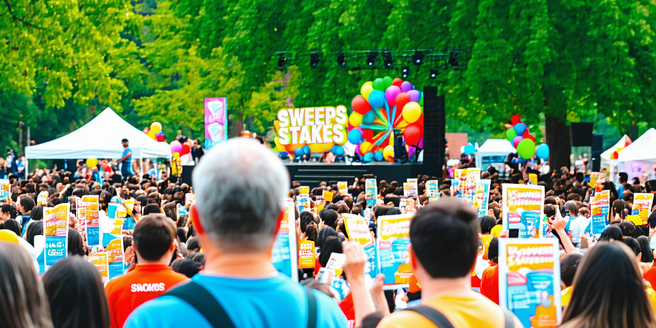
Understanding Sweepstakes: Definition and Features
Sweepstakes are promotional drawings in which prizes are given away to participants selected at random. Unlike contests, sweepstakes do not require participants to demonstrate skill or knowledge. The allure of sweepstakes is their simplicity; entry is often free or requires minimal effort, such as providing contact information. Companies leverage sweepstakes to increase brand recognition and engage with their audience. Legislation requires that sweepstakes clearly disclose rules, odds of winning, and prizes available in advance. Despite the ease of entry, organizers must ensure no purchase is necessary to comply with legal standards. This method of promotion aims to attract a broader audience by eliminating barriers to entry, making it a popular marketing tool.
Exploring Contests: Definition and Key Characteristics
Contests, on the other hand, require participants to exert a degree of skill, knowledge, or creativity to win. Unlike sweepstakes, contests are competitive; entrants are judged based on performance or adherence to criteria, with winners chosen based on merit. This form of promotion allows brands to engage with their audience on a deeper level, fostering a sense of competition and creativity. Participants often put great effort into their submissions, hoping to gain recognition and rewards. Contests often showcase the talents of participants, providing recognition and enriching customer interaction with the brand. Prizes in contests can vary, and the opportunities for participants to stand out add an additional layer of excitement. Thus, contests draw a smaller but often more engaged audience compared to sweepstakes.
Entry Methods: How Sweepstakes and Contests Differ
The entry methods for sweepstakes and contests define their core differences. Sweepstakes typically require minimal entry conditions, such as filling out a form or subscribing to a newsletter, which encourages broad participation due to the limited effort required. As a result, they are often used as a tool to rapidly grow an audience or increase brand visibility. In contrast, contests demand substantial input from participants, such as submitting creative content, answering questions, or completing specific tasks. This difference in entry complexity affects the audience size and dynamics, with sweepstakes drawing participation from a larger demographic and contests catering to individuals willing to invest time and energy. While sweepstakes aim for maximum reach, contests emphasize quality engagement and participant interaction.
Prize Structures: Comparing Rewards in Sweepstakes vs Contests
The prize structures in sweepstakes and contests reveal fundamental distinctions in their offerings. Sweepstakes often feature a variety of prizes, ranging from high-value items, such as cars or vacations, to smaller tokens like gift cards. These diverse rewards cater to a wide audience, attracting participants with different interests. The random selection process means every entrant has an equal chance of winning, potentially drawing participants through the allure of high-stakes rewards. Contests, however, align prizes with the efforts or talents showcased, with awards often reflecting the skill level demonstrated. Contests may offer monetary rewards, recognition, or opportunities relevant to the field of competition. The tailored prize structure in contests aims to incentivize quality over quantity in entries, offering meaningful recognition.
Legal Considerations: Sweepstakes and Contest Regulations
Legal regulations frame the conduct and design of both sweepstakes and contests. Sweepstakes must adhere to rules ensuring that no purchase is required to enter, maintaining a clear distinction from lotteries. Rules must be transparent and available, detailing entry methods, prize details, and odds of winning to protect consumers’ interests. It is crucial that organizers regularly update these rules to keep pace with changing laws and technologies. Contests, while similarly regulated, focus on ensuring fairness and transparency in judging. Organizers must define clear criteria and avoid bias in winner selection. Both promotional types must comply with federal and state laws, including disclosures and filings where necessary. Legal oversight ensures consumer protection and fair play, promoting trust and confidence in promotional activities.
